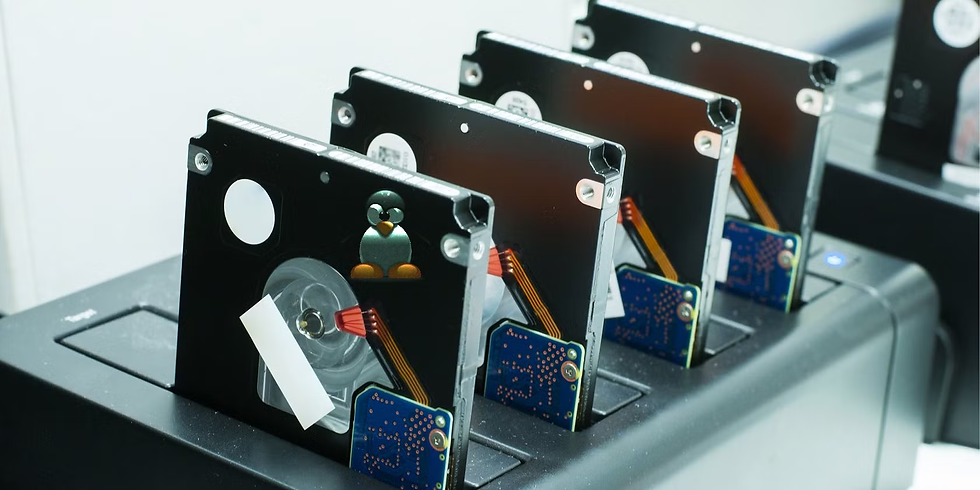HDD Cloning vs. SSD Cloning: What You Need to Know
- Ralph Emerson
- Jan 9
- 4 min read
When it comes to upgrading your computer’s storage or making backups, HDD cloning and SSD cloning are two essential processes. These procedures allow you to copy all the data from your existing hard drive to a new one, ensuring everything from files to the operating system is transferred seamlessly. While they may seem similar, understanding the differences between the two can help you make the best choice for your needs.

What is HDD Cloning?
HDD cloning refers to the process of copying all data from a Hard Disk Drive (HDD) to another hard drive. HDDs are the traditional storage devices that use mechanical parts to read and write data. They’ve been around for decades and are still commonly used due to their affordability and large storage capacities.
Cloning an HDD is a relatively simple process. A cloning software or tool can easily duplicate the contents of an HDD onto another drive, allowing you to transfer your entire system without reinstalling software or losing data. If you want to upgrade your current hard drive to a larger one or make an exact backup, HDD cloning can save you significant time and effort.
However, HDD cloning has its limitations. HDDs tend to be slower than SSDs, meaning your computer’s overall performance won’t see much of an improvement unless you switch to an SSD.
What is SSD Cloning?
In contrast to HDDs, SSD cloning involves transferring data from a Solid-State Drive (SSD) to another SSD. SSDs are faster, more durable, and consume less power than traditional HDDs because they use flash memory to store data. If you’re looking for better performance, SSD cloning is often the preferred option.
SSD cloning works similarly to HDD cloning, but there are some important factors to consider. One of the biggest advantages of SSDs is their speed. When you clone an SSD, the data transfer process tends to be faster, and your computer's performance is significantly improved. If you’re upgrading from an old HDD to a new SSD, the improvement in speed and performance will be noticeable immediately.
It's important to note that SSDs have a limited number of write cycles, which means that they can wear out over time. While cloning an SSD will transfer data, it's recommended to use SSD cloning software that can handle this process efficiently to preserve the lifespan of your new drive.
Why Should You Clone Your HDD or SSD?
Cloning your drive is often the best way to upgrade your computer without losing any data or configuration. Whether you’re upgrading from an old HDD to a new SSD or simply need to make a backup, cloning ensures that everything from your operating system to your files is transferred seamlessly.
Here are some common reasons why people choose to clone their HDD or SSD:
Upgrading to a Larger Drive: Cloning your data to a new, larger drive allows you to retain all your files and applications without needing to reinstall everything.
Switching to an SSD for Faster Performance: SSDs provide faster read and write speeds, reducing load times and making your computer run smoother.
Backup and Disaster Recovery: Cloning your drive creates a backup, making it easy to restore your system in the event of hardware failure.
Data Migration: If you’re switching from one computer to another, cloning your drive can help transfer all your files and settings quickly.
How to Clone Your HDD or SSD?
To perform HDD cloning or SSD cloning, you’ll need the right tools. Many users choose to use cloning software like Supercopier, which provides an easy-to-use platform to help you clone your drives quickly and safely.
Prepare the New Drive: Whether you’re upgrading to a larger HDD or switching to an SSD, ensure that the new drive is connected to your system.
Select the Cloning Tool: Choose reliable software, such as Supercopier, to handle the cloning process. This software will guide you step by step to make sure everything is transferred correctly.
Start Cloning: Follow the prompts and let the software copy all your data from the old drive to the new one.
Verify the Cloning Process: After the cloning is complete, check to make sure that everything has been transferred successfully. Boot your computer from the new drive to ensure everything is working smoothly.
Tips for Successful Cloning
To ensure a successful HDD cloning or SSD cloning process, here are a few tips:
Ensure Sufficient Space: Make sure the destination drive has enough space to hold all the data from your current drive.
Use Reliable Software: Reliable cloning software like Supercopier will reduce the chances of errors during the cloning process.
Check for Errors: Before finalizing the cloning process, check for any errors that could affect the functionality of the new drive.
Conclusion
Whether you're looking to upgrade your system or simply back up your data, HDD cloning and SSD cloning are essential processes for keeping your data safe and your computer running smoothly. While both processes serve the same fundamental purpose, understanding the differences between HDD and SSD cloning can help you choose the right option based on your needs.
For those looking to clone their drives with ease and efficiency, consider using Supercopier. It’s a tool designed to make the cloning process quick, reliable, and safe. Don’t wait for your data to be at risk—take control today and clone your drives effortlessly.
Ready to upgrade your storage or back up your data? Try Supercopier today and experience seamless drive cloning!



Comments